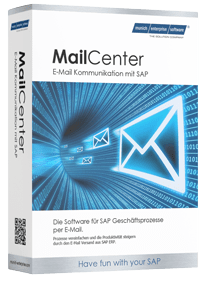Performance Monitoring in SAP Basis – Your Processes at a Glance
In an increasingly digitalized world, it is essential for companies to efficiently control and monitor business processes and the underlying software applications. Continuous monitoring of system performance ensures that applications function reliably and bottlenecks are detected at an early stage.
Performance Monitoring in SAP Basis gives you exactly this control: You get full transparency over system resources, data flows, workflows, and administrative processes. This allows you to identify potential disruptions before they develop into critical problems – and at the same time increase the efficiency of your IT landscape.
Table of Contents

End-to-end monitoring makes it possible to identify performance problems at an early stage and remedy them in a targeted manner. This has a direct positive effect on the stability and speed of your business processes – a clear competitive advantage.
What is SAP Basis?
SAP Basis stands for “Business Application Software Integrated Solution” – the technical basis for all SAP applications. As a central platform, SAP Basis connects the operating system, database, applications and communication protocols with each other and ensures that the SAP system runs smoothly.
Also known as SAP NetWeaver , SAP Basis offers a variety of features, including:
- Systems management and monitoring tools (e.g. CCMS)
- Server-side scripting support in ABAP and JavaScript
- Web technologies for online portals and shops (Business Server Pages)
- Data and resource management (storage, buffers, etc.)
- Profile and user management incl. Permissions
- Client-server architecture with user interface (SAP GUI)
- Control of transports between development, test and production systems
Through targeted performance monitoring within SAP Basis, you gain valuable insights into system health – an indispensable basis for stable processes and digital transformation.
How is SAP Basis different from SAP ABAP?
SAP ABAP is an ideal alias for SAP Basis. However, it is important to understand the difference between the two. SAP Basis is a system management version of SAP. On the other hand, SAP ABAP (Advanced Business Application Programming) is one of the two most important programming languages used by developers to create SAP applications (the other language is Java).
It is common for the line between SAP Basis administrators and SAP ABAP developers to be blurred in many organizations. It is common for professionals working on both entities to be well acquainted with each other’s tasks. However, most SAP organizations keep the areas of competence of SAP Basis and SAP ABAP separate.
Performance Monitoring in SAP Basis
Because SAP Basis allows different SAP applications to function and communicate with each other, it becomes important for an organization to monitor the performance of this system.
Performance monitoring in SAP Basis is a set of processes dedicated to monitoring the application servers, database space, CPU utilization, log file evaluation , and more. When you perform thorough performance monitoring in SAP Basis, also consider processes such as:
- Monitor batch jobs
- Monitoring of spool orders
- Monitoring database performance
- Monitor application users
- Monitoring of print requests
- Monitoring system-wide workflows
- Monitoring workflows for individual instances
- Overlook CPU usage
- Monitor lock entries
- Monitoring the system log
- Monitor buffer statistics
Important transactions for performance monitoring in SAP Basis
To monitor the system and its performance in SAP Basis, you must use certain transaction codes to execute certain processes.
Here are some of the most important transactions involved in performance monitoring in SAP Basis:
Application servers monitor SM51
This transaction is used to monitor all active application servers in your system. This action allows you to review the configured services and work processes in each instance. This gives you complete visibility into the performance and health of your network and all your SAP applications. It also frees up your IT resources, allowing you to focus on more important tasks.
Monitor work processes per instance SM50
This performance monitoring transaction in SAP Basis provides you with all the different processes related to a specific instance that is running, waiting, stopped, or PRIV. Here the status of all processes is checked.
Ideally, the state of processes in each instance should be either “ongoing” or “waiting.” If the status of your processes is different from these two, they need to be evaluated and reported on.
This transaction provides users with a lot of valuable information, including:
- The status of your work processes (whether they are busy or not),
- The action that is performed by a worker process in the Action column when it is executed, and
- The tables that are being worked on.
Now let’s take a look at some of the main issues that the transaction helps to investigate:
- Delay caused by a user – It can happen that a user takes too long to log in, or that they cannot log in, causing a delay in transactions. This can be the result of full use of the DIA processes. This can also be a by-product of long-lasting jobs. If necessary, you can cancel the session in question by selecting the jobs, then going to “Processes” and clicking “Cancel without Core”. This will help you cancel the job and share work processes with another user or process.
- PRIV status under the “Reason” column – While monitoring your processes, you may also come across users who have the PRIV status in the “Reason” column. This can mean that the user transaction is very large, which increases the need for more memory. In such circumstances, the DIA worker process will become the “property” of the user in question and prevent other users from accessing it. If you encounter this problem, you should contact the affected user and run the job in question as a background job.
- Long print job – If you encounter a long print job in an SPO worker process, you should investigate the problem instead of ignoring it. This situation may occur because of a problem related to the printer or print server.
System-wide monitoring of work processes SM66
You can use this transaction to monitor the utilization of the work processes using the global work process overview. Tracking system-wide worker processes helps you investigate the possible cause of a system performance issue without unnecessary delays.
With this transaction, you can get a comprehensive overview of the work process load on all your active instances throughout the system. You can use the Global Work Process Overview screen to evaluate the following elements:
- The ongoing state of each application server
- The reason why an application server is not running
- The status of the restarted server.
- The CPU and its request time
- Details of the logged-on user and the client to which they logged in
- Details of the current report
Lock Entry Monitoring SM12
To monitor your lock entries, you must execute transaction SM12 and add a “*” in the User name field.
SAP provides users with a locking mechanism to prevent other users from changing the record they are currently working on. In certain situations, these locks are not lifted. Such circumstances can occur when users are disconnected due to a network issue before they can unlock them.
Then it’s important to remove the old locks to prevent changes or access to your records. Lock statistics can be used to monitor the locks set in your system.
MONITORING CPU Usage ST06
Performance monitoring in SAP Basis also helps you monitor CPU usage in your system. Ideally, CPU usage should be around 60% to 65%. If it exceeds this limit, you may need to check the following items:
Run operating system-level commands and verify which processes are consuming the most resources
- Go to SM50 or SM66 to check for long-running jobs or long update queries that are running
- Go to SM12 and check the lock entries
- Go to SM13 and check the update active status
- Checking the errors in SM21
Monitoring database backup logs DB12
This transaction will help you determine when the last successful backup for your system was performed. With it, you can check the backups done the day before and check that everything is running smoothly. The transaction allows you to view the redo log files and check whether the redo log backup was successful.
A word at the end
These were some of the most important aspects to consider when monitoring performance in SAP Basis. These transactions and reviews will help you ensure that your system runs smoothly and that your business applications deliver the desired results. Automated performance monitoring relieves your team members of spending more time and effort than necessary, allowing them to focus on core business processes.






